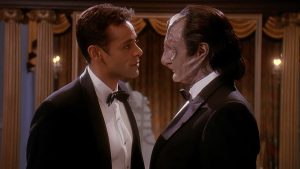
The Academy Awards, with their glitz and glamour, often feel reminiscent of a high-stakes sports event. As award season unfolds, actors position themselves strategically, vying for accolades that enhance their chances of winning big at the Oscars. Enthusiastic commentators analyze performances, weighing the odds for each contender, discussing everyone from dark horses to crowd favorites. When the award night finally arrives, it’s not just a ceremony; it becomes a captivating competition. Winners can emerge by a hair’s breadth, thanks to split votes, or they might triumph in sweeping fashion. And on the rare occasion, history witnesses a tie, though such events are few and far between.
Over the Oscars’ storied history, there have only been six occasions where ties occurred. One might think there are more, especially amid memorable moments like the mix-up in 2016 between “Moonlight” and “La La Land” for Best Picture, or the dispersion of major acting awards across different films in 2019. In truth, these moments, while dramatic, are not the same as ties. The rarity of ties can be attributed to the expansive membership of the Academy of Motion Picture Arts and Sciences, boasting around 10,500 voters who ultimately decide the fate of the biggest night in Hollywood. In the early days of the Oscars, this number was far smaller, making ties slightly more plausible.
The inaugural tie in Oscar history unfolded during the 5th Academy Awards in 1932. This year’s ceremony marked significant milestones, including the recognition of the first-ever Oscar-winning color film and the debut of short films in their own category. The Best Actor category saw an unprecedented twist when both Fredrich March and Wallace Beery were declared winners. March, who brought the character of Dr. Jekyll and Mr. Hyde to life, and Beery, who starred in “The Champ,” received the accolade thanks to a close voting outcome. Initially, only March was announced as the victor, but later it was revealed that Beery was just one vote behind. Academy president Conrad Nagel had to call Beery to the stage to share in the triumph to loud applause. This experience led to tighter regulations on how ties would be recognized in the future.
Fast forward to 1949, the Oscars saw another tie, this time in the documentary short category. Two films, “A Chance To Live” and “So Much For So Little,” focused on child welfare and won in a year where the nominees were limited. “So Much For So Little” especially stands out for its poignant narrative on public health services, embodying societal issues that still resonate today.
The 1968 Oscars presented a historical moment with a tie in the Best Actress category involving two iconic figures: Katharine Hepburn and Barbara Streisand. Hepburn secured her third win for “The Lion in Winter,” while Streisand won for her role in “Funny Girl.” This moment was particularly captivating, as it showcased the passing of the torch between two generations of Hollywood talent. Streisand’s exuberance during her acceptance speech, famously starting with “Hello, gorgeous,” added to the ceremony’s vibrancy and emotional depth.
After a two-decade hiatus from ties, the 1987 Oscars awarded the Best Feature-Length Documentary to two films, “Down and Out in America” and “Artie Shaw: Time Is All You’ve Got.” Both documentaries highlighted different aspects of life in America during the Reagan years, marking another notable intersection of politics and art.
In 1994, the Oscars again saw a tie, this time in the Best Live Action Short Film category. The films “Trevor” and “Franz Kafka’s It’s A Wonderful Life” shared the award. “Trevor,” which tells the story of a bullied young boy, gave rise to the Trevor Project, a crucial nonprofit organization aimed at supporting LGBTQ+ youth in crisis. Meanwhile, Capaldi’s film offered a surreal twist on Kafka’s themes, showcasing the versatility of short films.
Most recently, in 2013, Oscar history recorded a tie in the Best Sound Editing category, a differentiating accolade that has since merged with the Best Sound Mixing category. The celebrated films “Zero Dark Thirty” and “Skyfall” both took home the honors, further demonstrating the ongoing evolution of cinematic artistry and recognition.
While the road ahead may lack more ties for the Oscars, the hope remains that future ceremonies will bring unexpected moments of shared victory, capturing the essence of achievement and collaboration in the film industry.




